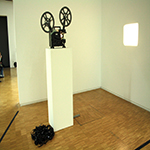Euroacademia Conferences
 Europe Inside-Out: Europe and Europeanness Exposed to Plural Observers (9th Edition) April 24 - 25, 2020
Europe Inside-Out: Europe and Europeanness Exposed to Plural Observers (9th Edition) April 24 - 25, 2020 Identities and Identifications: Politicized Uses of Collective Identities (9th Edition) June 12 - 13, 2020
Identities and Identifications: Politicized Uses of Collective Identities (9th Edition) June 12 - 13, 2020 8th Forum of Critical Studies: Asking Big Questions Again January 24 - 25, 2020
8th Forum of Critical Studies: Asking Big Questions Again January 24 - 25, 2020 Re-Inventing Eastern Europe (7th Edition) December 13 - 14, 2019
Re-Inventing Eastern Europe (7th Edition) December 13 - 14, 2019 The European Union and the Politicization of Europe (8th Edition) October 25 - 26, 2019
The European Union and the Politicization of Europe (8th Edition) October 25 - 26, 2019 Identities and Identifications: Politicized Uses of Collective Identities (8th Edition) June 28 - 29, 2019
Identities and Identifications: Politicized Uses of Collective Identities (8th Edition) June 28 - 29, 2019 The European Union and the Politicization of Europe (7th Edition) January 25 - 26, 2019
The European Union and the Politicization of Europe (7th Edition) January 25 - 26, 2019 7th Forum of Critical Studies: Asking Big Questions Again November 23 - 24, 2018
7th Forum of Critical Studies: Asking Big Questions Again November 23 - 24, 2018 Europe Inside-Out: Europe and Europeanness Exposed to Plural Observers (8th Edition) September 28 - 30, 2018
Europe Inside-Out: Europe and Europeanness Exposed to Plural Observers (8th Edition) September 28 - 30, 2018 Identities and Identifications: Politicized Uses of Collective Identities (7th Edition) June 14 - 15, 2018
Identities and Identifications: Politicized Uses of Collective Identities (7th Edition) June 14 - 15, 2018
The Politics of Globalization and Heritage in Havana, Cuba
-
-

-
Presentation speakers
- Gabriel Fuentes, School of Architecture, Marywood University, USA
- Download presentation
Abstract:
Since granted world heritage status by the United Nations Educational, Scientific, and Cultural Organization (UNESCO) in 1982, Old Havana has been the site of contested heritage practices. Critics consider UNESCO’s definition of the 143 hectare walled city center a discriminatory delineation strategy that primes the colonial core for tourist consumption at the expense of other parts of the city. To neatly bound Havana’s collective memory / history within its “old” core, they say, is to museumize the city as ”frozen in time,” sharply distinguishing the “historic” from the “vernacular.” While many consider heritage practices to resist globalization, in Havana they embody a complex entanglement of global and local politics. The Soviet Union’s collapse in 1991 triggered a crippling recession during what Fidel Castro called a “Special Period in a Time of Peace.” In response, Castro redeveloped international tourism—long demonized by the Revolution as associated with capitalist “evils”—in order to capture the foreign currency needed to maintain the state’s centralized economy. Paradoxically, the re-emergence of international tourism in socialist Cuba triggered similar inequalities found in pre-Revolutionary Havana: a dual-currency economy, government-owned retail (capturing U.S. dollars at the expense of Cuban Pesos), and zoning mechanisms to “protect” Cubanos from the “evils” of the tourism, hospitality, and leisure industries. Using the tropes of “heritage” and “identity,” preservation practices fueled tourism while allocating the proceeds toward urban development, using capitalism to sustain socialism. This paper briefly traces the global politics of 20th century development in Havana, particularly in relation to tourism. It then analyzes tourism in relation to preservation / restoration practices in Old Havana using the Plaza Vieja (Old Square)—Old Havana’s second oldest and most restored urban space—as a case study. In doing so, it exposes preservation / restoration as a dynamic and politically complex practice that operates across scales and ideologies, institutionalizing history and memory as an urban design and identity construction strategy. The paper ends with a discussion on the implications of such practices for a rapidly changing Cuba.
-
Related Presentations

It’s Not Easy to Say “Minority”. Ladin and Italian in Trentino-Alto Adige
- Chiara Meluzzi
- Ilaria Fiorentini

Russian and Siberian Regional Identity: Commonalities and Differences
- Anna Solomonovskaya
- Galina Yakushko

Legal and Political Aspects of the European Union Citizenship
- Zbigniew Czubinski















